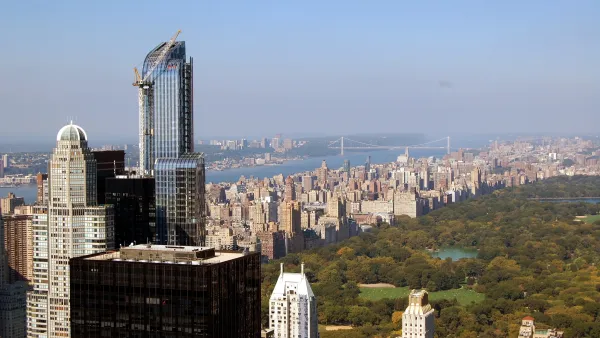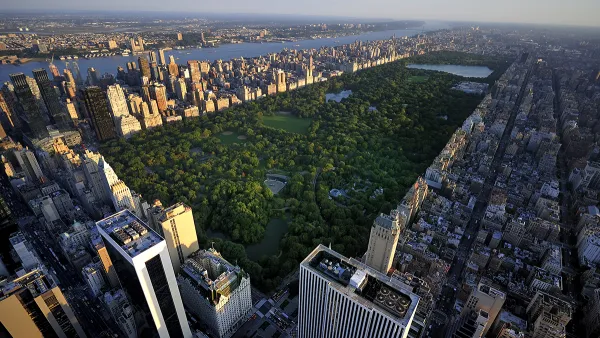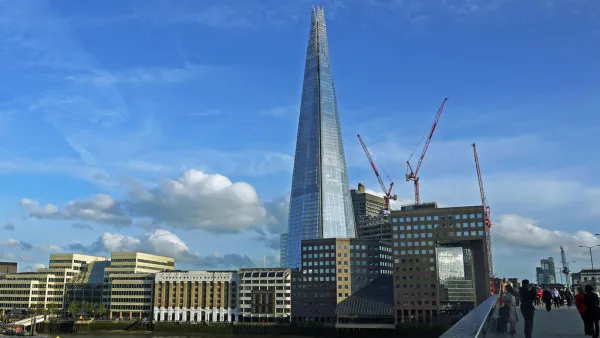The Washington Post details the concern over the shadows cast by skyscrapers on the city street below. The latest high-profile case study of the ability of skyscrapers to block the sun: New York's Midtown.
Emily Badger writes that the collection of high-rises forthcoming in New York's Midtown "are changing more than the city’s famous skyline… They will also transform New York far below, further darkening city streets and casting long shadows that will sweep across Central Park."
Badger sums up the issue and its political complications:
"For cities, shadows present both a technical challenge — one that can be modeled in 3-D and measured in 'theoretical annual sunlight hours' lost — and an ethereal one. They change the feel of space and the value of property in ways that are hard to define. They’re a stark reminder that the new growth needed in healthy cities can come at the expense of people already living there. And in some ways, shadows even turn light into another medium of inequality — a resource that can be bought by the wealthy, eclipsed from the poor."
The coverage digs specifically into the New York example, with a shadow study of Central Park with the proposed construction in place, insights from the Municipal Art Society of new York, which is one of the local organizations most vocally opposing the new residential development, and also linking to a recent story by Dan Rubinstein about a March 2015 action by the New York City Council to create a task force to study the impacts of skyscraper shade on the city's parks.
Badger also notes that controversies like those embroiling New York City as a new "Billionaires' Row" of high-rise residential is built near Central Park can also be found in cities like San Francisco and Toronto. The article, for instance, includes an example of the 3D modeling software that allows developers to track shadows in San Francisco in accordance with that city's 1984 "sunlight ordinance," which was just updated last year [pdf].
FULL STORY: In the shadows of booming cities, a tension between sunlight and prosperity

National Parks Layoffs Will Cause Communities to Lose Billions
Thousands of essential park workers were laid off this week, just before the busy spring break season.

Retro-silient?: America’s First “Eco-burb,” The Woodlands Turns 50
A master-planned community north of Houston offers lessons on green infrastructure and resilient design, but falls short of its founder’s lofty affordability and walkability goals.

Delivering for America Plan Will Downgrade Mail Service in at Least 49.5 Percent of Zip Codes
Republican and Democrat lawmakers criticize the plan for its disproportionate negative impact on rural communities.

Test News Post 1
This is a summary

Test News Headline 46
Test for the image on the front page.

Balancing Bombs and Butterflies: How the National Guard Protects a Rare Species
The National Guard at Fort Indiantown Gap uses GIS technology and land management strategies to balance military training with conservation efforts, ensuring the survival of the rare eastern regal fritillary butterfly.
Urban Design for Planners 1: Software Tools
This six-course series explores essential urban design concepts using open source software and equips planners with the tools they need to participate fully in the urban design process.
Planning for Universal Design
Learn the tools for implementing Universal Design in planning regulations.
EMC Planning Group, Inc.
Planetizen
Planetizen
Mpact (formerly Rail~Volution)
Great Falls Development Authority, Inc.
HUDs Office of Policy Development and Research
NYU Wagner Graduate School of Public Service





























